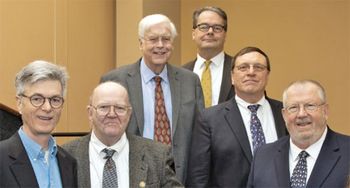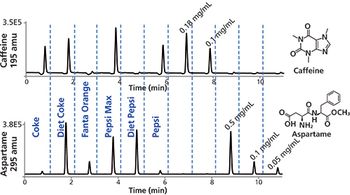
This is the first in a series of articles exploring topics that will be addressed at the HPLC 2020 conference in San Diego, from June 20 to 25.

This is the first in a series of articles exploring topics that will be addressed at the HPLC 2020 conference in San Diego, from June 20 to 25.

How has UHPLC has affected pharmaceutical research? The answer depends on your point of view.

In this study, we describe a simple and rapid liquid chromatography–mass spectrometry (LC–MS) method for the evaluation of caffeine, taurine, and aspartame in teas, soft drinks, and energy drinks using high performance liquid chromatography (HPLC) coupled with electrospray ionization (ESI)-MS detection and multiple injections in a single experimental run (MISER) analysis.

This article describes a simple and rapid LC–MS method for evaluation of caffeine, taurine, and aspartame in teas, soft drinks, and energy drinks using HPLC coupled with electrospray ionization mass spectrometry detection and MISER analysis.

Synthetic oligonucleotides have become increasingly popular as a result of the recent discovery of ribonucleic acid interference (RNAi), a natural process for silencing gene expression.

A review of LC methods and strategies for the chromatographic separation of short RNA oligonucleotides

This month’s column provides an overview of green chemistry issues relating to preparative chiral SFC chromatography in support of preclinical development in the pharmaceutical industry.

Published: April 1st 2014 | Updated:

Published: May 1st 2005 | Updated:

Published: December 1st 2014 | Updated:

Published: April 1st 2015 | Updated:

Published: April 1st 2015 | Updated:

Published: July 1st 2019 | Updated: